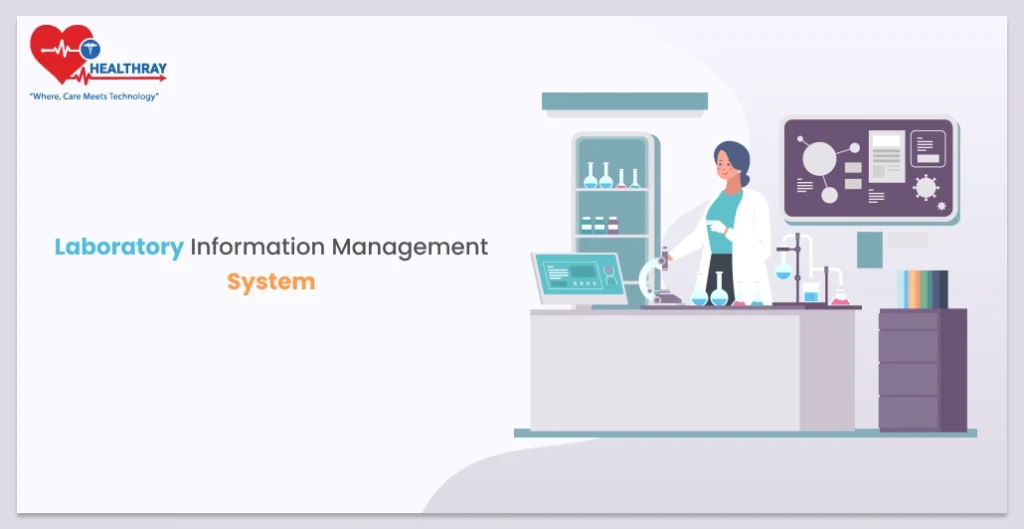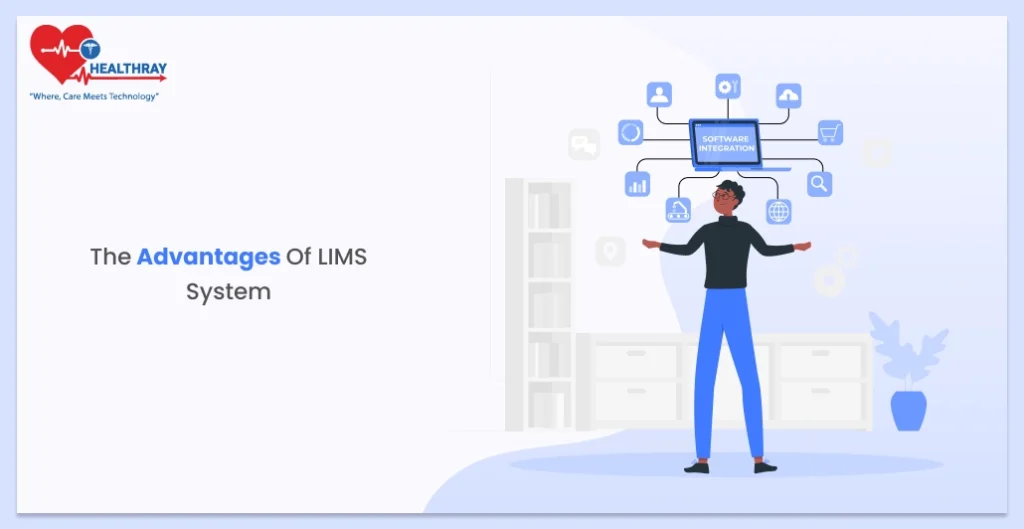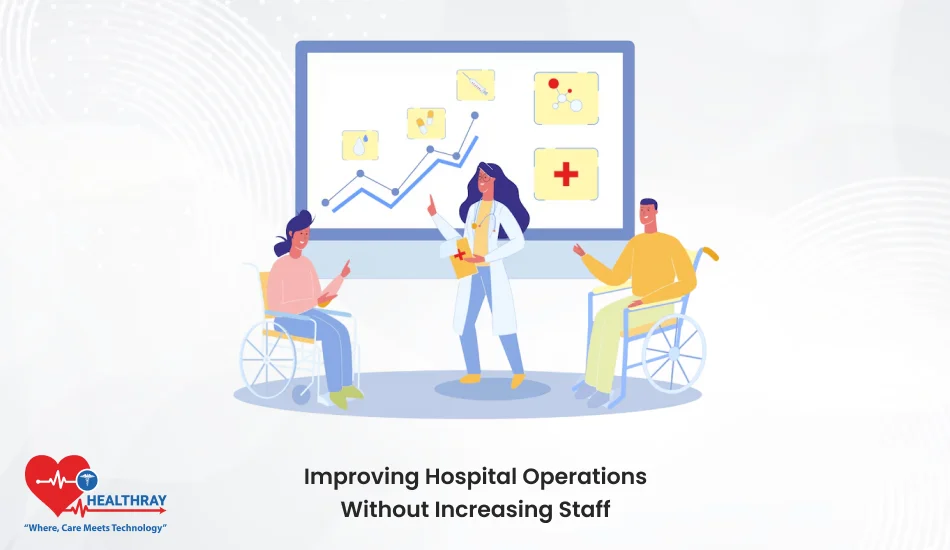Quick Summary
A laboratory information management system manages lab operations effectively. It encompasses various types of management departments from data management department to sample management department. Moreover, it requires some steps for selecting the right LIMS software including, determining the lab needs, considering some key factors and functionalities, demonstration trail, and some post-implementation steps.
Introduction

In modern labs, It’s predominant to use the latest technologies for smoothly conducting lab activities. Technology integration in labs has many benefits which can’t be counted on fingers. Furthermore, the advantages include efficient sample tracking, managing large amounts of lab data and wholly automating the lab process. Consequently, it improves lab efficiency and handles a substantial amount of lab inventory easily.
Laboratory Information Management Systems (LIMS ) requires extensive security protocols for preventing laboratory and patient-sensitive information. In labs, there are numerous inventories for conducting research and patient tests. Also, this contributes to the record of experimental design information. Therefore, the Laboratory Information Management System centralizes a large amount of laboratory data and strengthens the bond with other medical departments.
Key Features Of Laboratory Information Management System

Laboratory Information Management System (LIMS) has versatile functionalities and features for managing entire laboratory departments effectively. LIMS plays a crucial role in healthcare for facilitating precise records and saving extensive amounts of time. Let’s delve into advanced LIMS software features :
- Lab Inventory Management
- Sample Management
- Compliance Management
- Managing laboratory Staff
- Contributing to Administrative Work
Lab Inventory Management :
Managing laboratory supplies is not an easy task. It requires a substantial amount of human effort including, drafting the required inventory list, scrutinizing the existing stock list, and identifying the best vendor. Also, recording lab information from order details to billing details. Below are the advantages of lab inventory management :
- Minimizes laboratory downtime
- Digital inventory records
- Lowers laboratory costs
- Regulatory lab compliance
- Enhancing lab safety.
- Persistent inventory tracking.
Sample Management :
LIMS solutions ease the sampling process. Moreover, the laboratory sample process needs a lot of patience and manual effort. Sample management requires numerous sequential steps for efficiently conducting sample processes. Generally, the steps include :
- Sample data collected from patients and ensures security protocols.
- Place sample bottles with unique patient identifier number
- Maintaining sample records efficiently in the standard format
- Retrieve the sample from the patient’s identifier number
- Sample analysis with proper documentation.
- Dispose of samples with legalized methods such as chemical process, autoclave, etc.
- Maintain real-time sample information.
Compliance Management :
- Laboratories require compliance with necessary regulations. Further, there are lots of Indian regularities such as the Indian Council of Medical Research and Good Laboratory Practices (GLP).
- Compliance with laboratory regulations is a bit of a haunting task. However, it is easier with Healthray’s Laboratory Information Management System (LIMS).
- Non-compliance with laboratory regulations imposes severe legal penalties, and may court order for the closure of the laboratory.
- It is the goal of every laboratory and mandatory for enhancing patient safety and helps in managing various risks such as biological risks, inventory risks, and data integrity risks.
Managing laboratory Staff :
- In every laboratory, managing staff is an important task for monitoring them persistently, in regards to adherence to security protocols and staff activity.
- Digital records of staff performance and their details help in allocating staff resources efficiently. Consequently, enhances laboratory staff performance.
- LIMS systems enhanced coordination and communication among staff members. Therefore, it aids in a fast laboratory process.
- Ensures work tasks are distributed equally among laboratory staff as per their experience. Consequently, It leads to increased staff morale and minimizes staff conflicts.
Contributing to Administrative Work :
- Lab administrators have numerous responsibilities that are hard to conduct manually. However, Healthray’s laboratory information system smoothly conducts operational activities through automated work.
- With the LIMS solution, it is easy to schedule staff activities and manage inventory and records of routine operations.
- LIMS solutions are not only for medical laboratories, but also useful for different types of departments such as contract research organizations, clinical laboratories, and government health laboratories.
- Simplifying the financial management process. Therefore, allocate financial resources effectively across different departments.
The Advantages of LIMS System

Modern labs manage extensive amounts of data in an organized format and comply with all laboratory regulations. Therefore, it leads to many advantages for laboratories and patients. Let’s look into some of them :
- Laboratory Data Management
- Instrument Integration
- Digital Entries
- Workflow Automation
Laboratory Data Management :
- Management of laboratory data is a vital task and also, a toughest task. Also, it is a major factor for laboratory success.
- Many laboratories have failed due to the lack of laboratory objectives and resources are not properly allocated among staff members. Most importantly, they failed due to poor data management.
- Laboratory Information Management System helps in managing entire laboratory data by following systematic steps.
- These steps include accumulating data from numerous sources, maintaining databases, and securely storing data in conformance with laboratory regulations. Similarly, disposing of data in a legitimate format.
Instrument Integration :
- The Laboratory Management System supports integration with diverse laboratory instruments including analytical instruments, sensors, and medical equipment.
- Involves numerous steps to integrate and depict the insightful inventory information. Therefore, facilitates real-time data information and increases efficiency.
- All inventory data is consolidated in a unified system. Consequently, it minimizes human intervention, reduces manual errors, and maintains data reliability.
- LIMS helps in fetching data easily from anywhere at any location. It is easy to share data with other stakeholders. Therefore, aids in quick and effective decision making.
Digital Entries :
- Whole laboratory records in the electronic format. Therefore, we also called it an electronic laboratory notebook. Consolidate the laboratory data such as sample lab information, patient information, test result report, and instrument data with vendor details.
- It eliminates manual entry and minimizes hospital expenses including stamp costs, printing costs, and paper costs. Additionally, manual entry has many obstacles such as human error, and time-consuming processes.
Workflow Automation :
- Modern LIMS automates entire laboratory data work from recording the vendor transaction to generating patient invoices. Moreover, it tracks samples of individual patients.
- Manages inventory data to enhance patient safety and maintains an optimum level of inventory. Also, supports enhancing the age of laboratory equipment and lowers laboratory downtime.
Why is LIMS Software Best For Your Lab Needs?

Laboratory Information Management Systems (LIMS) encompasses different departments such as the data management department, finance management department, inventory management department, accountancy management department, and taxation management departments. Moreover, these departments are connected and quickly share any kind of laboratory data with each other after the consent of superior lab managers.
Lab managers can oversee the activities of individual staff members. It records staff personal details, certification records, and staff’s responsibilities with their team and project managers. Moreover, incorporates the specialization of each staff and accordingly, assigns their roles. Maintains staff historical performance and locates the performance-deficient areas. Consequently, it enhances job satisfaction and minimizes recruitment costs.
Guide for Selecting the Right Laboratory Information Management Systems

Are you one of those who thought to purchase the best solution for handling laboratory work? or Are you in a dilemma, how to select the right laboratory information management system? If it is, you click on the right tab. Selecting the right laboratory information management system is a daunting task, It will be easy with the following steps :
Determine Laboratory Needs :
Laboratory has different departments, and is required to meet with leading people and ask them about their challenges which are a major hurdle in achieving laboratory goals.
Generally, the laboratory hurdles include hard to maintain accurate records, difficulty in following regulatory guidelines, and patients have difficulty accessing real-time medical updates. Also, identifying functional and non-functional requirements.
Consider Key Factors :
Before selecting LIMS systems, it’s important to consider some factors. Moreover, These factors include :
- User-friendly interface
- Scalability
- Compliant with diverse laboratory regulations
- Vendor reliability
Research Market Options :
In the market, innumerable LIMS software are available. Therefore, choosing the right vendor is important for high-quality software products and staying informed regarding new updates.
Research about the LIMS core functions ensures these functions are aligned with the laboratory goals and objectives. Make a list of the top 10 LIMS, which have necessary incorporated functionalities.
Select the best LIMS :
The next step, selecting the best LIMS system out of the scrutiny list is again a difficult one. Check out the necessary features and also, consider the software budget while selecting the best LIMS software.
To reduce your dilemma, we advise you to choose Healthray, the best LIMS software. It is a comprehensive platform with standout functionalities that can’t compete with any other software.
Step towards digital era with our healthcare solution
Revamp your hospital facilities and embrace change for better healthcare management. Ease in managing and organizing large medical datasets leads to effective analysis. Seize the opportunity now!
Implement the LIMS system :
LIMS implementation is necessary in this fast-paced life, where decreasing hospital expenses is the ultimate motivation. As per research, it has been observed that more than 70% cost is incurred on conducting manual tasks and correcting duplicate errors.
Without wasting your time, implement Healthray which is the leading LIMS software in your hospital. Check the configuration and ensure all necessarily incorporated functionalities. Monitoring the LIMS software and note down, if any challenge arises.
Schedule Training for laboratory staff :
Training the staff is an important step after LIMS implementation. First, provide training to senior managerial staff and after, decentralize staff. Requires to follow some steps for efficiently conducting training :
- Draft training plan concerning different departments.
- Facilitate different modes of training such as offline mode and online mode.
- Informing the training schedule of the managerial staff in advance.
- Conducting training and recorded sessions.
- If required, another session would be conducted.
Conclusions
Laboratory Information management system is an essential component for all laboratories in this modern landscape, where the goal is to minimize operational expenses while enhancing lab revenue. It streamlines the lab process of all departments from the sample department to the compliance department. LIMS has numerous advantages including, laboratory data management, and digital entries. Important to adhere to some basic steps including identifying the laboratory needs, considering vital key factors, surveying numerous market options, choosing the best LIMS solution, and conducting post-implementation steps.





